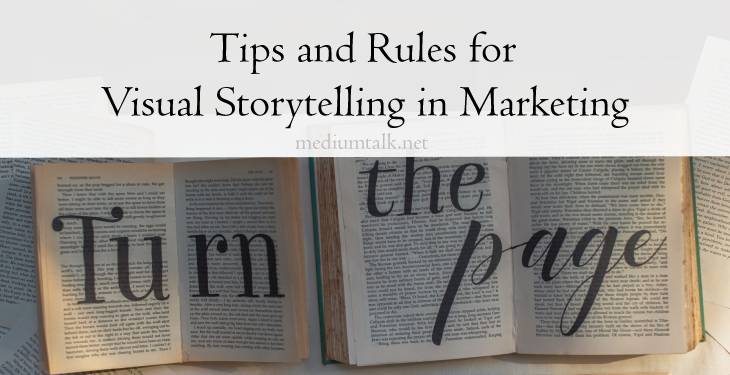Stories are often thought of as pages in a book. Or perhaps we remember stories our parents told us when we were young. These are just a few examples of traditional storytelling.
A story is told using words, either written or spoken aloud. It details the events and their outcomes from start to finish. What about stories that are told visually rather than with words?
Visual storytelling is the art of telling stories without audio or text. These can be added, but it is generally accepted that visuals can work almost as well without needing words. Some images can tell a whole story, as they are often quoted by the saying, “A picture paints a thousand thoughts.
But what is visual storytelling? What are the secrets, techniques, and nuances of visual storytelling? These are just a few of these essential rules for creating visual stories that resonate with your brand.
1. Be Personal

This is a sound piece of advice and one that’s timeless. Be you! Brands that are honest with themselves have an advantage over their competition because no one can copy them. They won’t be able to tell the same story as yours.
Visual storytelling works best when there is some vulnerability in the imagery. This shows that your brand has personality and is more appealing to your target audience than a generic advertisement or illustration. To create compelling visual stories, you need to understand your brand’s personality.
2. Strive for Strife

This is a simple but essential canon of storytelling. The story is about a protagonist who wants to accomplish something. However, an opposing force stops them from achieving their goal. This is crucial to the success and longevity of your visual campaigns.
Visual advertisements that tell an engaging story with conflict will get viewers more engaged. These are also short, so they can be viewed when viewers have available. The most memorable ads tell a story visually to communicate brand values.
3. Keep It Moving
A compelling visual story must flow naturally. Clear structure and a clear story arc are essential to provide a sense of direction. It’s a massive turnoff for viewers who will focus their attention elsewhere if things seem lukewarm or confusing.
This is a common theme in many blockbuster movies and award-winning TV ads, so it’s worth considering for your visual campaigns.
4. Have Fun while Being Educational

Your audience should be able to take away something from your visual campaign. Your campaign should teach your audience something they don’t know from everyday life.
Your brand will become more ingrained in this knowledge, and your audience will have a better impression of you as a brand. Brands like Guinness and Lidl have done this, and their visual ads campaigns have had great success. Remember, a great storyteller can tell an entertaining story while still tying their brand
5. Dare to Be Different
This is almost a given. It can be hard to stand out among the many brands that are some of the most popular in the world. Visual stories should have many twists and turns. They shouldn’t follow the beaten path and should challenge storytelling conventions.
As a visual storyteller, you should always look for new ways to tell your story. You can add a fresh and exciting spin to something that seems tedious. Brands can never appear homogenous, so don’t be afraid to throw your competition around!
6. Follow an Arc

Every good story has a beginning and middle. The narrative arc is the journey through which the story progresses. An unstructured presentation, such as a random sequence or image, is not a story. Aristotle first described the storyteller’s arc thousands of years ago. It is the story’s timeline. This is how a story or character travels from one point to another. The pattern has been followed by Hollywood directors and professional storytellers since silent films’ glory days.
The story arc is like a journey. The scene’s beginning exposition is the introduction. It is the story’s beginning exposition. Next, an incident occurs – the why or how of the story. This causes the action to climb toward the story’s peak. Sometimes the journey is obstructed by complications and obstacles. Once the audience reaches the top, they should be able to see something that makes it worthwhile.
The climax, which can be found in the middle or near the end of the story, is the story’s culmination. It occurs when the subject achieves a reversal or revelation. A character on a quest finds his destination and wins the battle or uncovers the truth, which is an example of the climax.
The audience learns the story’s conclusion as the action falls toward its end. What happens after the subject’s revelation or change of fortune? Sometimes, the falling action can even contain a moment of suspense that makes the end uncertain. The story’s end is the resolution of the subject’s journey and wraps up all loose ends.
The story arc is like a journey. The scene’s beginning exposition is the introduction. It is the story’s beginning exposition. Next, an incident occurs – the why or how of the story. This causes the account to climb toward its peak, sometimes with many obstacles and complications. Audiences should be able to see the reward for their efforts once they reach the top.
The climax, which can be found in the middle or near the end of the story, is the story’s culmination. It occurs when the subject achieves a reversal or revelation. A character on a quest finds his destination and wins the battle or uncovers the truth, which is an example of the climax.
The audience learns the story’s conclusion as its action falls toward its end. What happens after the subject’s revelation or change of fortune? Sometimes, the falling action can even contain a moment of suspense that makes the end uncertain. The story’s end is the resolution of the subject’s journey and wraps up all loose ends.
Summary
These tips will help you build stronger relationships between your brand’s audience and your brand if you feel your visual story is not telling the best possible. Psychology can be used to engage your audience with your imagery.
